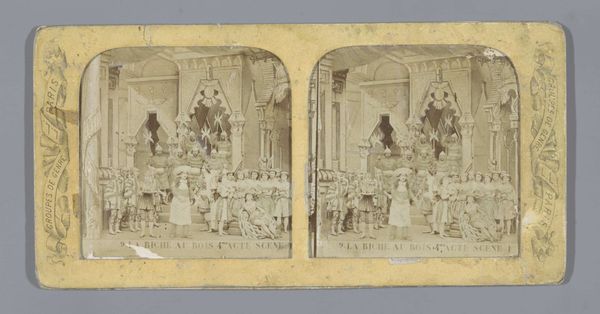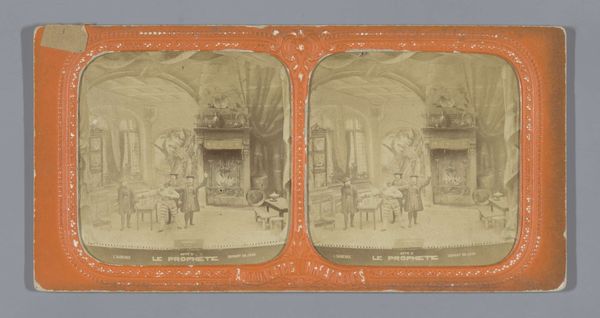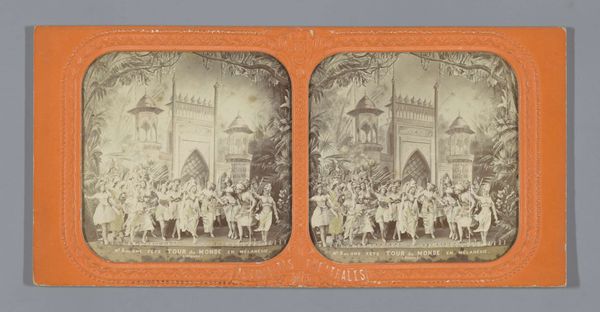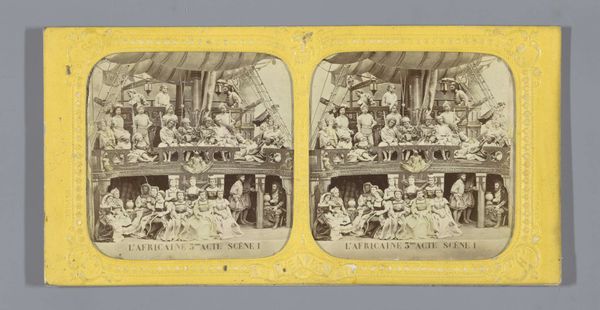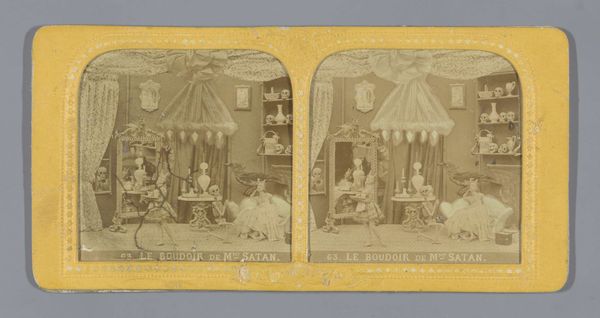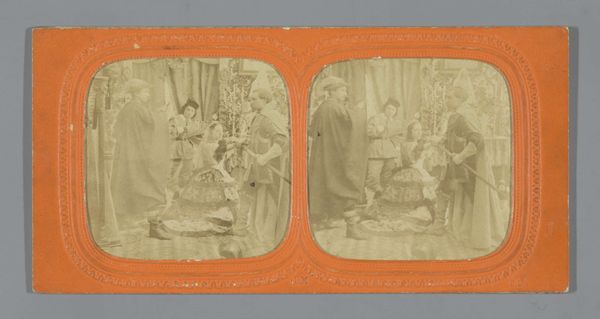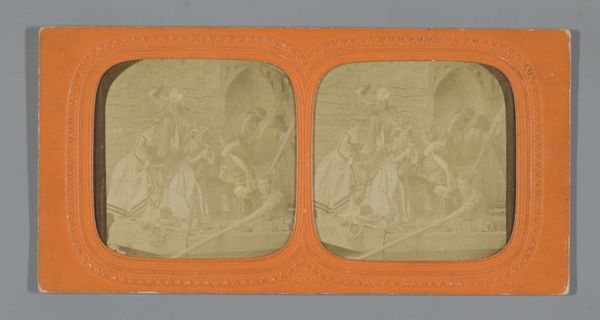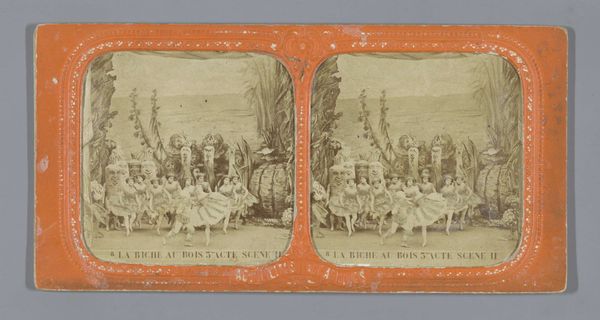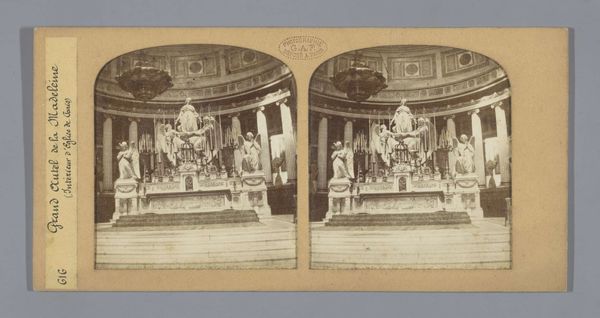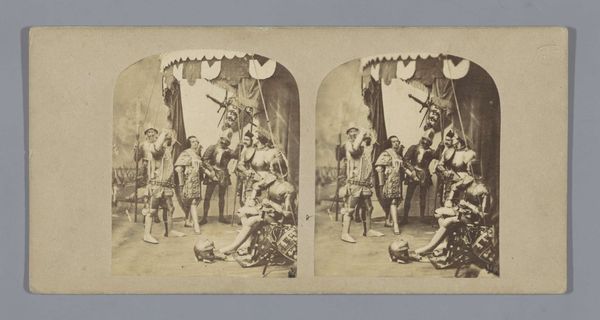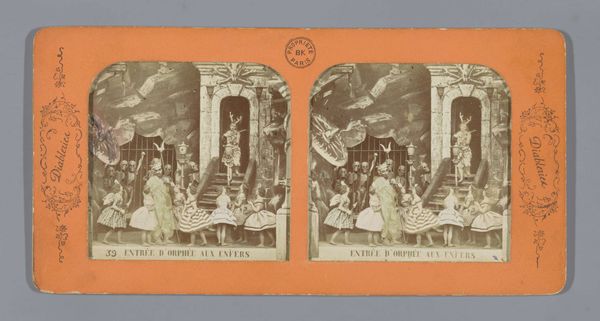
print, daguerreotype, photography
# print
#
landscape
#
daguerreotype
#
photography
#
orientalism
#
genre-painting
Dimensions: height 87 mm, width 177 mm
Copyright: Rijks Museum: Open Domain
Editor: This is an 1876 print called "Scène uit Le tour du monde en quatre-vingts jours," referencing Jules Verne’s famous novel. It looks like a daguerreotype, showing a staged scene with many figures in what appears to be an "oriental" setting. The overall effect is quite theatrical. What can you tell me about the materiality of its making? Curator: Looking at this as a print meant for mass consumption, the daguerreotype process becomes really interesting. Consider the labor involved in creating such a detailed image, likely relying on artisan shops that churned out similar "exotic" views for a public hungry for vicarious travel. The image, even replicated, still trades on the supposed authenticity afforded by the photographic medium, creating an illusion of documentary truth. Editor: So, the medium itself contributes to the idea of authenticity, even though it is clearly staged and produced. What does this choice tell us? Curator: It speaks volumes about how people consumed the idea of "the Orient" at the time. The photograph flattens complex cultures into a single, easily digestible image, ripe for consumption by a Western audience. What materials were employed in its making speaks to its inherent inauthenticity as well. It used easily accessible and cost-effective products, further contributing to a broader issue of artistic devaluation through mass reproduction. Editor: That's interesting. So instead of an artistic expression of place, this piece really highlights mass production, exoticism, and consumerism? Curator: Precisely. It highlights the economic realities and social desires intertwined with the production and consumption of art in the 19th century. Rather than dwelling solely on the subject, we see how labor, technological advancement, and global exchange deeply impacted the artwork. Editor: I never thought about the role of production so explicitly! Thank you for showing me this different lens. Curator: My pleasure. Sometimes it is best to ask not “What does this image mean?” but “How and why was it made?" to truly begin seeing the image.
Comments
No comments
Be the first to comment and join the conversation on the ultimate creative platform.
